TechRadar Verdict
Exciting design choices separate this machine from the NUC herd, although it might appear slightly too colourful for Office users. A good performer and competitively priced, but not ideal for gaming.
Pros
- +
AMD Ryzen 5 powered
- +
Easy access to the internals
- +
Dual M.2 Slots
Cons
- -
Not ideal for gaming
- -
Only one 10Mbit USB port
Why you can trust TechRadar
Acemagician AMR5: Two minute review
The Acemagician AMR5 was originally promoted on Kickstarter, something that platform wasn’t created to be used for. In its original form, it used a lower specification AMD processor, but now its been revamped into a retail product that uses an AMD Ryzen 5 class CPU.
Where this one diverges from the typical Mini PC is that it doesn’t use the Intel NUC enclosure model, instead choosing an exclusively free-standing design that is meant to sit on a front desk or on a TV unit.
As mini systems go, this is a reasonably powerful one, having a six-core and twelve-thread CPU, a Radeon GPU and plenty of preinstalled RAM. Exactly how this translates into performance can be controlled by the owner, as the power button rotates to select ‘Silent’, ‘Auto’ or ‘Performance’ modes.
In Auto, the system speed is balanced against fan RPM, allowing it to increase should the system demand more cooling.
The chosen mode is easy to see since the power button is LED backlit in specific colors for each option, and the case also has animated RGB LEDs for something of a festive experience.
Our only reservation about the flashing lights is that there is appears to be no hardware or software means to control them, unfortunately.
Where this design stands out is that it is very easily upgradable, and access to the internals doesn’t even require tools. The right side of the case is only held on with a couple of plastic lugs and magnets, making access a breeze.
Sign up to the TechRadar Pro newsletter to get all the top news, opinion, features and guidance your business needs to succeed!
Two SODIMM memory slots and two M.2 NVMe storage can be changed or augmented. Increasing the amount of RAM from the standard 16GB to a maximum of 64GB merely requires swapping the SODIMM modules. And conversely, the default 512GB SSD can be increased to 2TB by a direct swap, and an additional drive can be added to double that amount.
There are a few hardware aspects that a buyer needs to contend with. The first of these is that because of the dual M.2 slots, the number of PCI lanes for USB was limited. There are five USB ports, but only one is USB 3.2 Gen 2, and the rest are Gen 1.
And, while technically, it is possible to connect three monitors to the AMR5, the integrated GPU isn’t sufficiently powerful enough to drive these all at the same time at the highest resolutions.
Promotional material from Acemagician infers that the AMR5 would be a good gaming platform, and we’d only agree with that if the games you play have very modest requirements and you are willing to use lower resolutions and details settings.
For the money, the AMR5 is a very nice system that has more than enough power for general computing tasks (think Microsoft 365, browsing and even Photoshop) and file sharing.
Acemagician AMR5: Price and availability
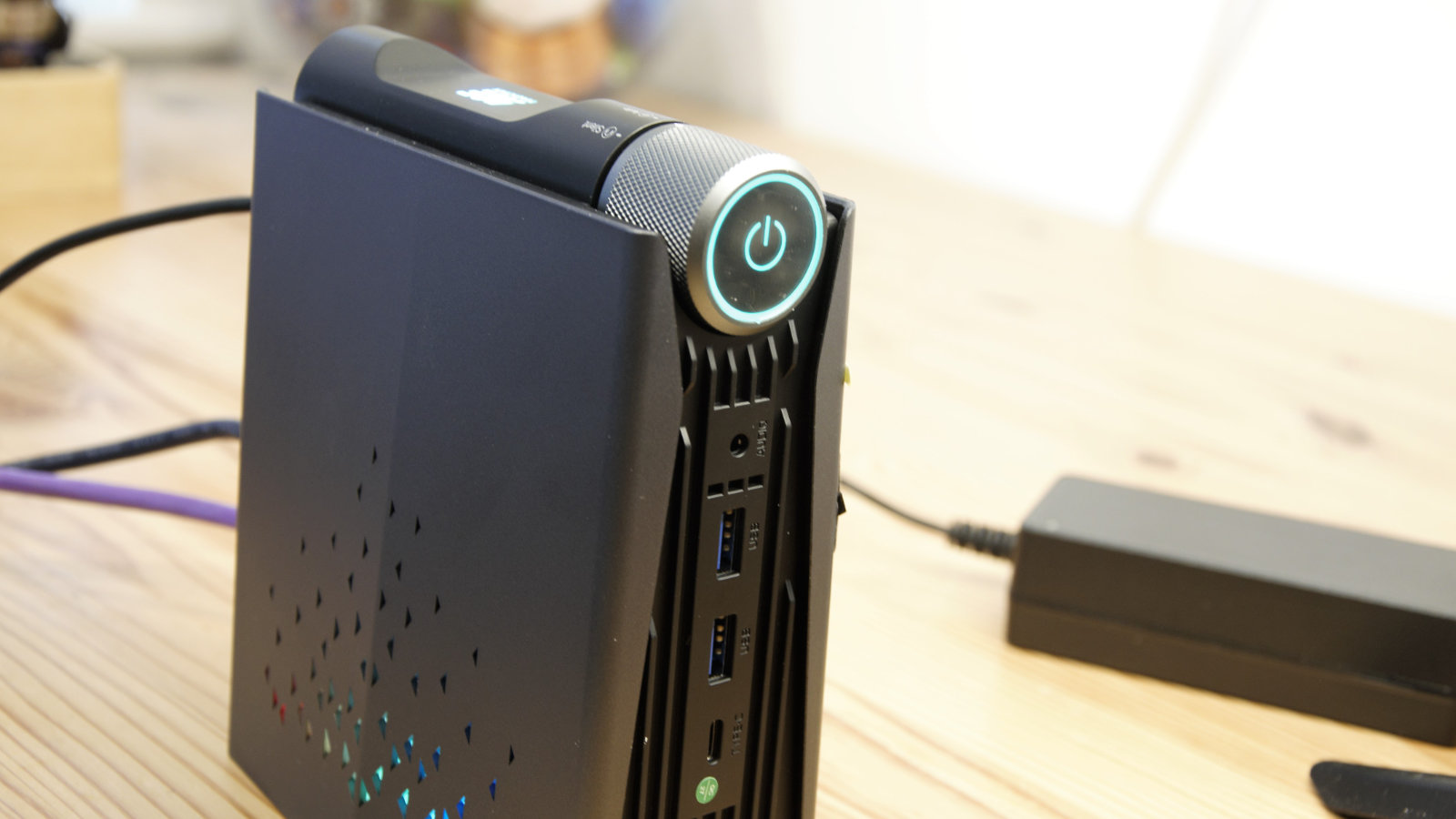
- How much does it cost? $330/ £375 /AU $495
- When is it out? It is available now
- Where can you get it? Can be found on Amazon, and other online retailers
Here is the Acemagican AMR5 configuration sent to TechRadar for review:
CPU: AMD Ryzen 5 5600U
Graphics: Radeon Graphics
RAM: 16GB DDR4 RAM (Expandable to 64GB)
Storage: M.2 2280 512GB NVMe SSD
Ports: 3x USB 3.2 Gen 1 Type-A, 1x USB 3.2 Gen 2 Type-C (10Mbit), 1x HDMI 2.0, 1x DisplayPort 1.4, 1x universal audio jack
Connectivity: Dual-Band WiFi 6, 1x Gigabit LAN adapter, Bluetooth 5.1
Size: 132.9 x 156.1 x 71.8 mm (W x D x H)
OS installed: Licensed Windows 11 Pro.
Accessories: PSU Adapter12V/3A, HDMI cable
Depending on where in the world you source the AMR5, the price can fluctuate wildly.
On Amazon.com, US customers can pay $424, but European buyers will find it is closer to $600 for the same hardware via Amazon.co.uk.
But the cheapest place to buy this hardware is AliExpress, where UK customers can find it for only £376.67, US for $328.17 and Australians for AU$493.17.
While it might take longer to come from AliExpress, the cost savings over Amazon and other next-day-delivery retailers are significant.
- Value: 5/ 5
Acemagician AMR5: Design
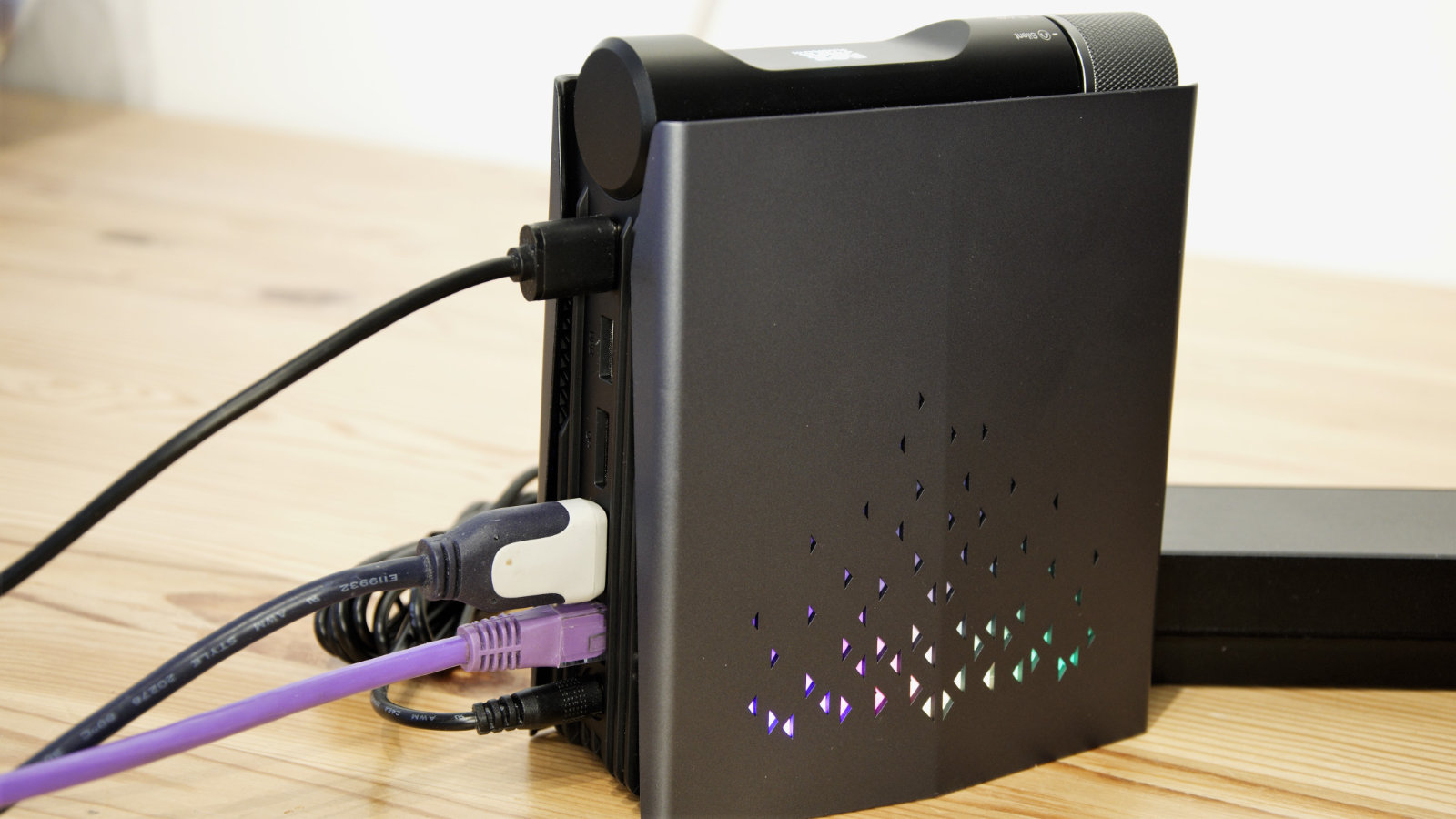
- Not made for VESA install
- Only one Gen 2 USB port
- Easy internal access
The design of this Mini PC isn’t like any of the classic NUC designs we’ve seen elsewhere, as the AMR5 was designed to sit exclusively on the desk and not be mounted onto a monitor.
It was also made only to stand upright and not be placed on its side.
The positive aspect of this design is that due to the wedge shape, it is reasonably stable and less likely for the cabling to topple it over.
Because of this layout, all the ports are on the front and back, with three USB ports on the front and one on the rear, along with an audio jack. Another two USB ports on the back, along with HDMI, DisplayPort and Gigabit Ethernet.
What’s missing is any SD Card slot, and with the exception of the USB-C port, all the USB is only USB 3.2 Gen 1 aka, USB 3.0.
That limitation suggests that the system inside is short of PCIe lanes, and we’ll discuss that more later on, and where those lanes might have been used.
Ports aside, the AMR5 has some hard-to-ignore design elements that make it a bit more colourful than the standard Mini PC.
Both sides of the machine feature RGB LED lights that cycle through a rainbow colour scheme that is visible through small triangular holes in the case.
There are other light sources that come from the power button and the Acemagician logo on the spine of the case. In addition to being pressed conventionally for ‘On/Off’ the power button also features some attractive knurling that enables it to become a rotating three-way switch.
Rotated left, the power button goes blue, indicating a power saving mode. Twisted to the right, the light becomes red, showing maximum performance mode. And, in the middle position, it shows green for balanced operation.

As this isn’t a laptop, saving power might seem unnecessary, but using these modes reduces the fan noise it can generate in the performance setting.
With many NUCs, it is possible to get inside and upgrade some features with a screwdriver, but the AMR5 requires no tools. One side of the machine has a cover that is held on with some small plastic lugs and a few magnets. Popping off that panel provides access to both the M.2 slots (x2) and the DDR4 SODIMM modules (x2), things you should only work on with the power off.
The inclusion of dual M.2 ports is a fantastic option since it allows the transfer from one M.2 to another without any other hardware or reinstalling the OS.
In our review machine, both SODIMM memory slots were occupied, but these modules can be removed and replaced with larger capacities if required.
Overall, the AMR5 doesn’t fall into the usual tropes of a mini PC, and it has some potential for many different roles.
- Design: 4 / 5
Acemagician AMR5: Features
- Powerful CPU
- Great expansion options
- Trade-off between M.2 and USB
The other AMD Ryzen mini PC we’ve seen that uses the same Ryzen 5 5600U processor was the Bosgame U56, a chip that smashes the Intel N5095/5105 and N6211 to bits.
This chip is a six-core and twelve-thread CPU with a base clock of 2.3GHz and a turbo clock speed of up to 4.2GHz. We’ve seen moderately faster mini systems using the Intel Core i7-1195G7, but these are much more expensive than the AMR5 and use much more power to achieve those gains.
That this chip can achieve what it does with limited power is a testament to AMD’s chip design skills and the TSMC 7nm FinFET process that it is fabricated using.
It’s hard to fault the Zen 3 architecture CPU, but the weaker component here is the Radeon Vega CPU. Compared to the Intel Iris Xe GPU, it lacks somewhat in compute performance.
As we’ll see in the benchmarks later, the Radeon part of this silicon is the only thing holding back the Ryzen 5 from handing out a sound thrashing to the Core i7-1195G7 in almost every aspect.
However, unless the task you need a mini PC system for is specifically graphical, the Ryzen 5 5600U processor has plenty of performance to spare for office applications.
As we’ve already mentioned, it is very easy to get inside the AMR5 and boost its potential with some extra RAM or M.2 storage.
Some NUC designs offer a single M.2 slot and a 2.5-inch bay for a SATA device, but Acemagican went with two M.2 and no other options.
This was probably the right call, as the 500MB/s limit of SATA SSDs makes them a poor substitute for M.2 NVMe storage.
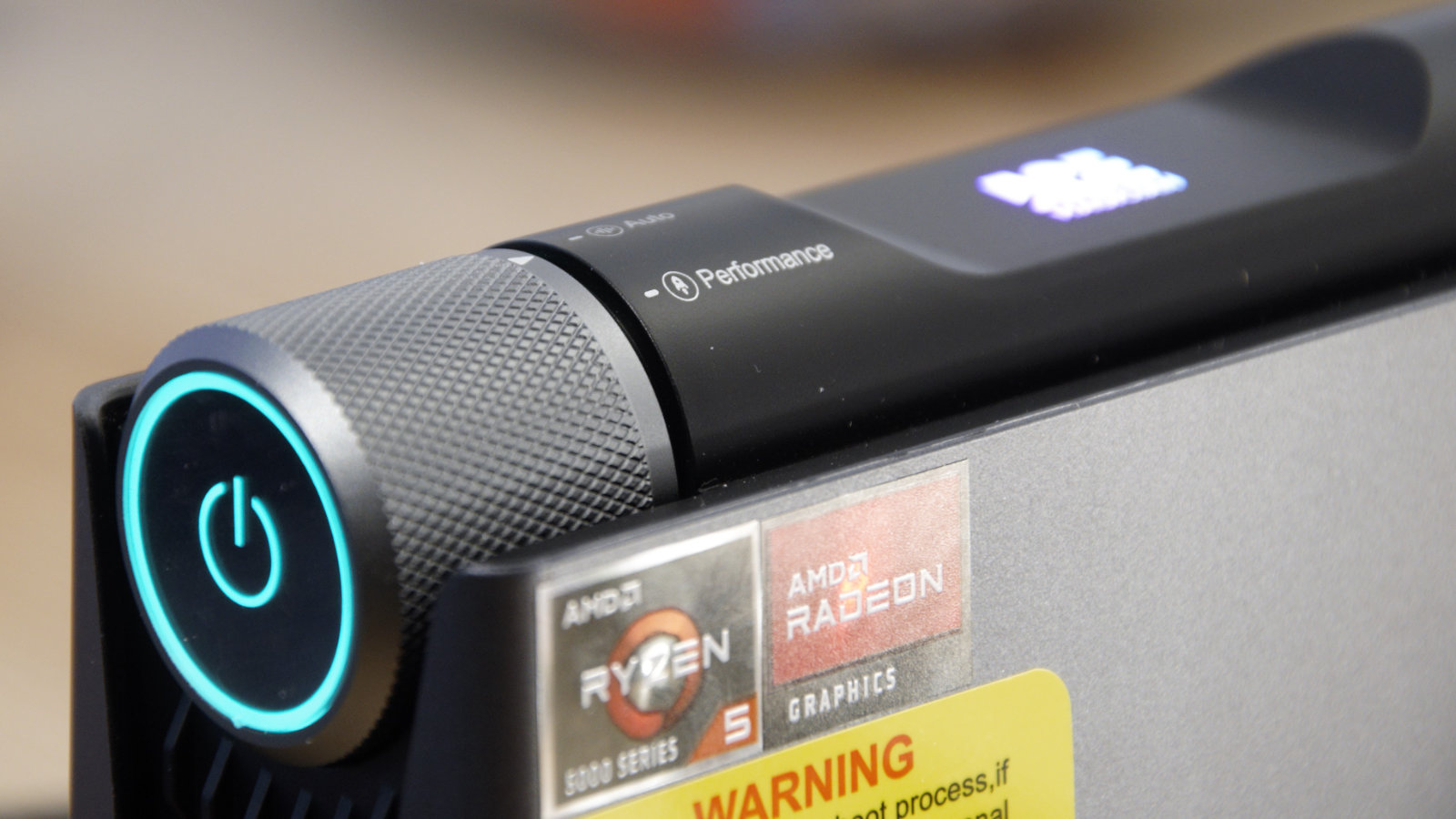
What SFF (Small Form Factor) machine makers often fail to reveal is how many lanes of PCIe the M.2 slots have access. We’ve seen machines short on PCIe lanes limited to just PCIe 3.0 x1 or roughly 1,000MB/s.
With two slots, this was easy to evaluate, and it turns out that the ones in the AMR5 are PCIe 3.0 x4. This version of PCIe is inherent to the AMD chipset, so putting PCIe 4.0 drives in this unit will degrade them to PCIe 3.0 mode.
That both slots have four lanes explains why all the USB ports are 5Gbit/s, with the exception of the USB-C. There is an argument that instead of providing four 5Gbit/s USB ports that reducing the number by one and providing a single 10Gbit/s with a Type-A inlet might have been preferable. However, adapters for USB-C to USB-A are available.
Making those lanes available to M.2 slots is good for power users, but some would have wanted faster USB or Thunderbolt instead of the second M.2 slot.
Acemagician AMR5: Performance
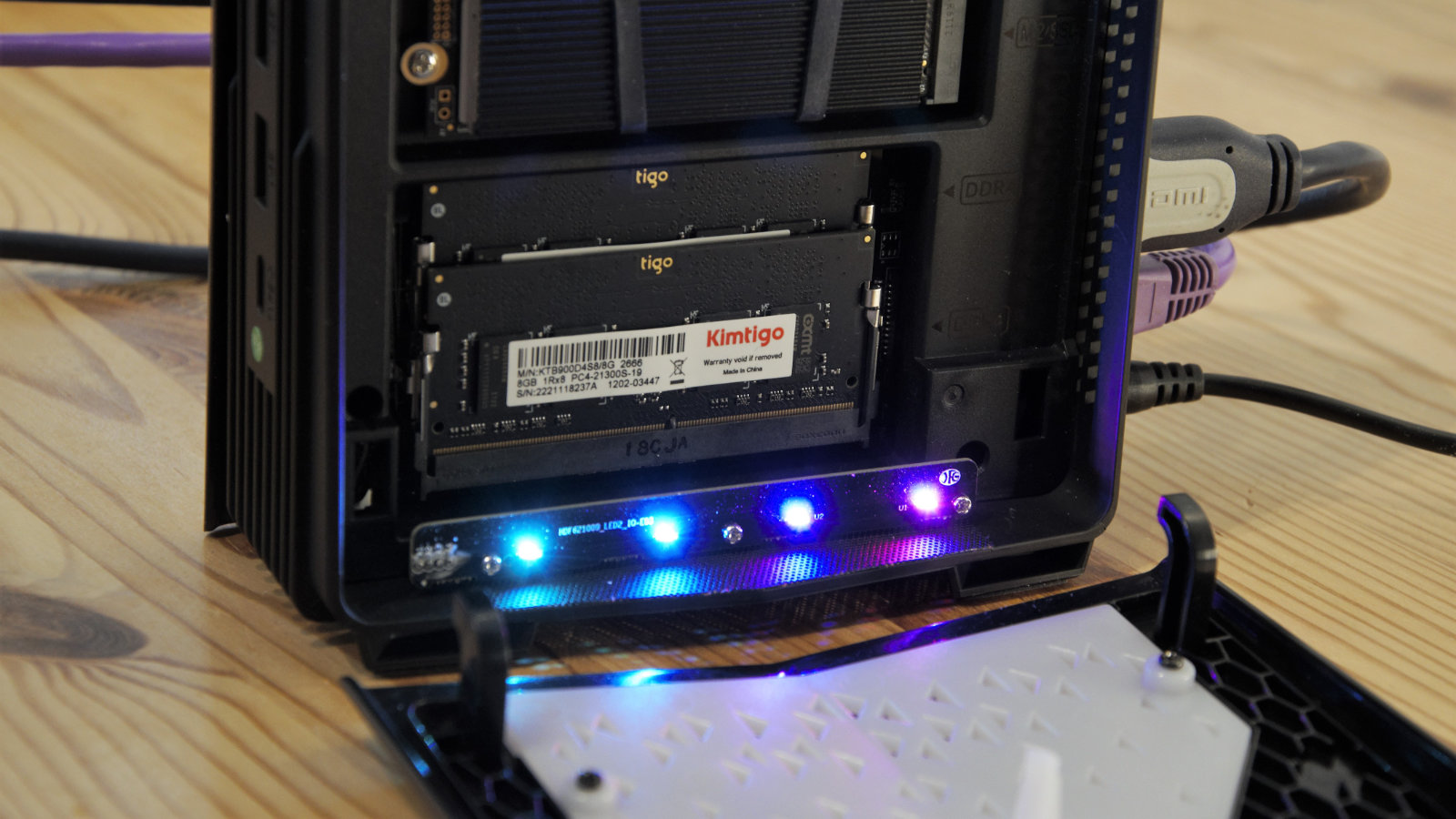
- Good performer
- Radeon needs an overhaul
- NVMe drive potential
Here's how the Acemagican AMR5 scored in our suite of benchmark tests:
3DMark Wild Life: 6724; Fire Strike: 3233; Time Spy: 1266;
Cinebench R23 CPU pts: 1364 (single-core); 7466 (multi-core)
GeekBench 5: 1411(single-core); 6198 (multi-core), 13624 (OpenCL)
CrystalDiskMark: Sequential Read: 2562MB/s; Sequential Write: 1842 MB/s
PCMark 10 (Office Test): 5808
Windows Experience Index: 8.0
Compared to the cheaper NUC systems that use Intel N5095 or N5105 processors, the Ryzen 5 5600U is on an entirely different level. All those cores and threads make this a powerful processor that is as capable as many desktop processors.
In CineBench23, a score of 7,466 for the multi-core test elevates this machine above every Intel mini PC design we’ve seen in the past year, even those using Intel 11th Gen silicon.
However, on single-core tests, it lags a little behind those using the Intel Core i7-1195G7 and Core i5-11320H.
Where the bigger difference comes is in respect of the compute power since the Radeon Vega integrated GPU can’t beat those Intel-based platforms that use the Iris Xe class GPUs.
A 3DMark Wild Life score of 6,724 doesn’t beat the 11,630 we’ve seen from an Iris Xe machine, and the GeekBench OpenCL test also reveals a deficit.
If AMD would bring the GPU in this package up a notch, it would easily outperform 11th Gen mobile parts using the Ryzen 5.
SFF makers often use cheaper NVMe drives in their systems, and the AMR5 is no exception. At least they didn’t saddle it with an Intel p660, like the Geekom Mini IT11, but the one they used still can’t achieve 2,000MB/s writes or 3,000MB/s reads.
Initially, based on the CrystalDiskMark 8.0.4 scores, we wondered if the M.2 slots in the AMR5 were only PCIe 3.0 x2 lanes. We put the latest Samsung 990 Pro in this machine and revealed that the slots are indeed four lanes connected.
While that’s a PCIe 4.0 part, it did still achieve around 3,700MB/s reading and 3,500MB/s writing when installed in the AMR5. Therefore investing in a branded PCIe 3.0 drive, like the Samsung 980 Pro, would be a worthwhile exercise.
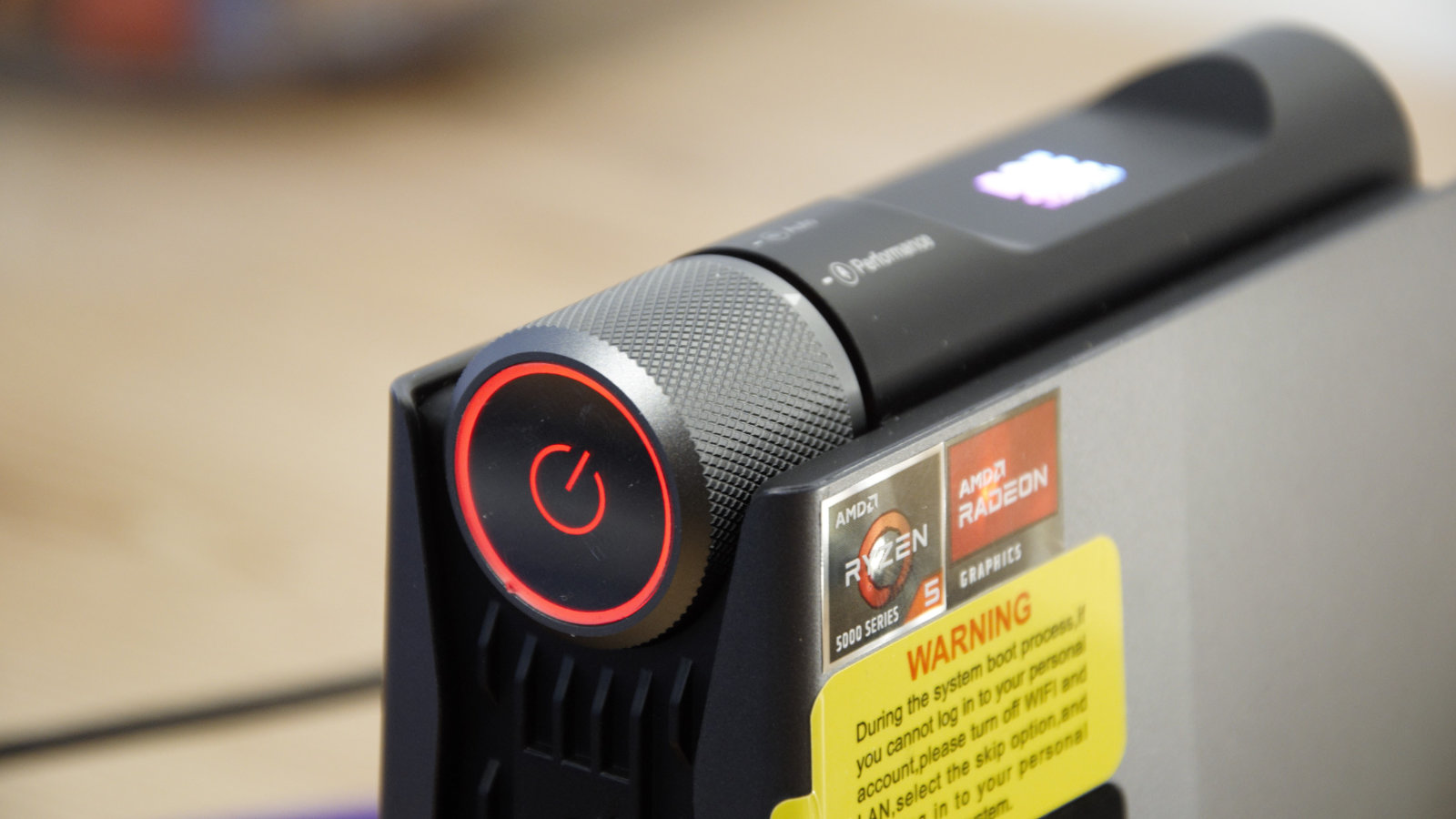
- Performance: 4 / 5
There are lots of things to like about the AMR5 and a few things we’d change.
Easily the best aspect of this machine is how easily it can be upgraded and that it has two PCIe 3.0 x4 M.2 slots. With the price of NAND falling and larger capacities coming, it could soon be practical to turn this mini PC into a powerful media server.
The flip side of this choice is that the USB ports are mostly the lacklustre USB 3.0 variety, although one port has some potential for adding external storage to share.
We wish you could control or at least disable the light show, but for the asking price on AliExpress, the AMR5 is an impressive machine, even if it doesn’t quite meet the specifications needed for gaming.
Acemagician AMR5: Report card
| Value | For the asking price this is a powerful system | 5 / 5 |
| Design | Not VESA mountable, but workable | 4 / 5 |
| Features | Dual M.2 slots make upgrading easy | 4 / 5 |
| Performance | Great CPU held back a little by an average GPU | 4 / 5 |
| Total | Something different with plenty of neat features | 4 / 5 |
Should you buy a Acemagician AMR5?
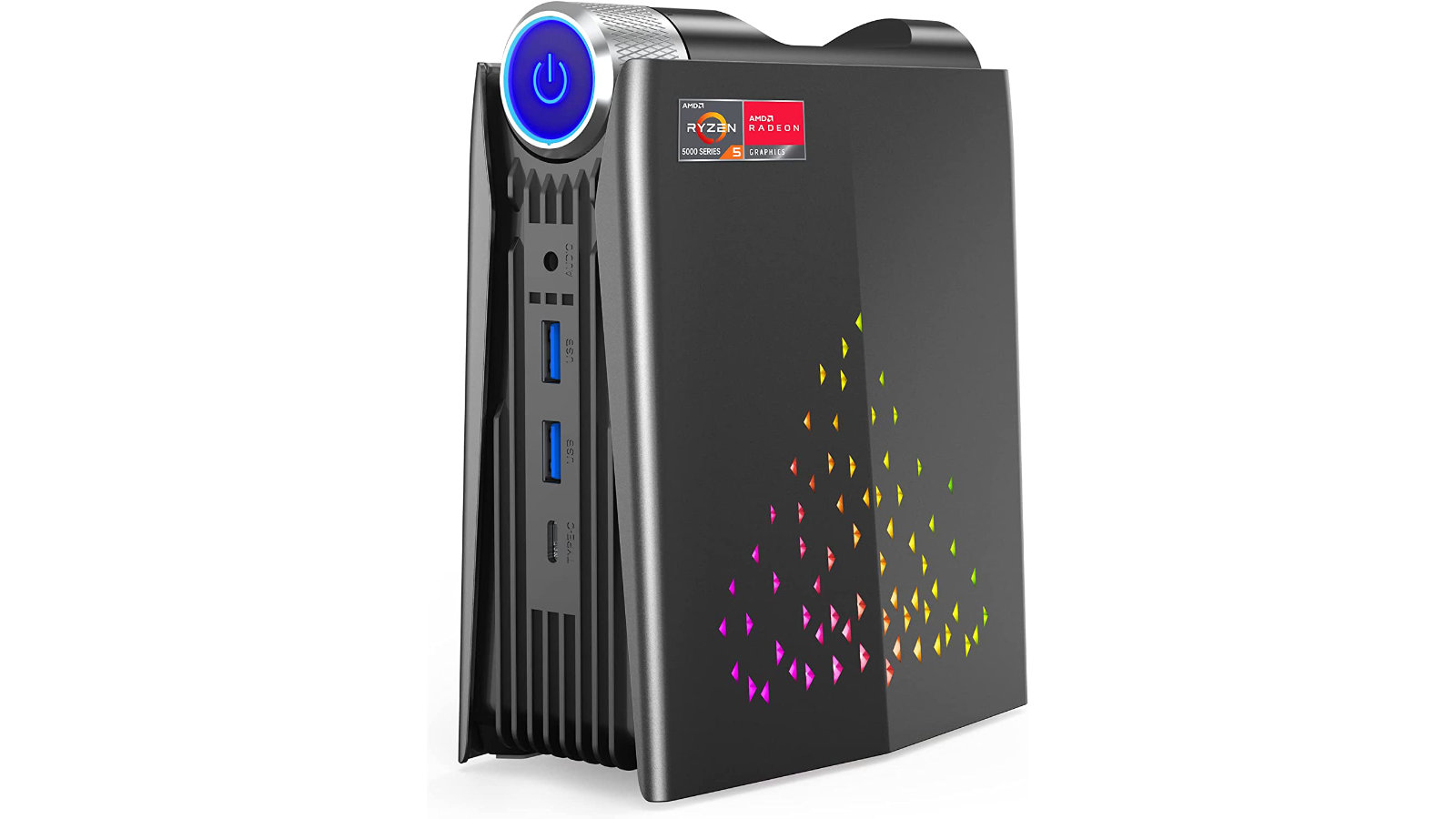
Buy it if...
Media serving is a requirement
With dual M.2 slots, plenty of RAM and the potential of externally attached drives, the AMR5 could be ideal for serving a media collection.
Greater than Office app performance is needed
While it has GPU limitations, the AMR5 offers more power than a low-specification desktop or cheaper NUC. Those that often struggle with office tasks should find them easy on this.
Portability is important
The AMR5 might not be as small as a NUC system, but it's small enough to easily carry around for presentation purposes. And with the storage expanded, there will be sufficient space for copious amounts of slides, videos and images.
Don't buy it if...
You want an all-in-one design
This machine can’t be VESA mounted to a monitor to create an ad hoc all-in-one machine. If that’s a requirement, then you need to pick something else.
You need a discrete GPU
The limitation of a NUC enclosure is that there is no PCIe slot or room to mount a video card. If you want to game or work on CAD, then this machine, or any other NUC, isn’t for you.
You want to game on this PC
The Ryzen 5 CPU is a monster, but the Radeon GPU in the AMR5 isn’t anything special. The demands of modern game titles and the resolutions they are designed for aren’t a good fit with the capabilities of this system.
Also consider
Beelink SEi11 Pro
The SEi11 Pro uses the Core i5-11320H processor, reducing the cost to less than $350. A strong CPU and GPU combination make this an effective alternative if you can live without the dual M.2 slots in the AMR5.
Check out our Beelink SEi11 Pro review
BOSGAME U56
A NUC built around the same AMD Ryzen 5 5600U processor that offers plenty of great features for around $470. The onboard Radeon IGU is still and issue, but this one can be VESA Mounted.
Read our full BOSGAME U56 review.
Apple Mac Mini M1 (2020)
For those that like Apple products, the Mac Mini M1 is effectively the only choice in its mini PC category. At nearly $700, you pay for that privilege, as expected. This machine can’t be upgraded, and a replacement was due this year but has so far failed to materialise.
Read our full Apple Mac Mini M1 (2020) review
We've also rated the best business computers.
Mark is an expert on 3D printers, drones and phones. He also covers storage, including SSDs, NAS drives and portable hard drives. He started writing in 1986 and has contributed to MicroMart, PC Format, 3D World, among others.




